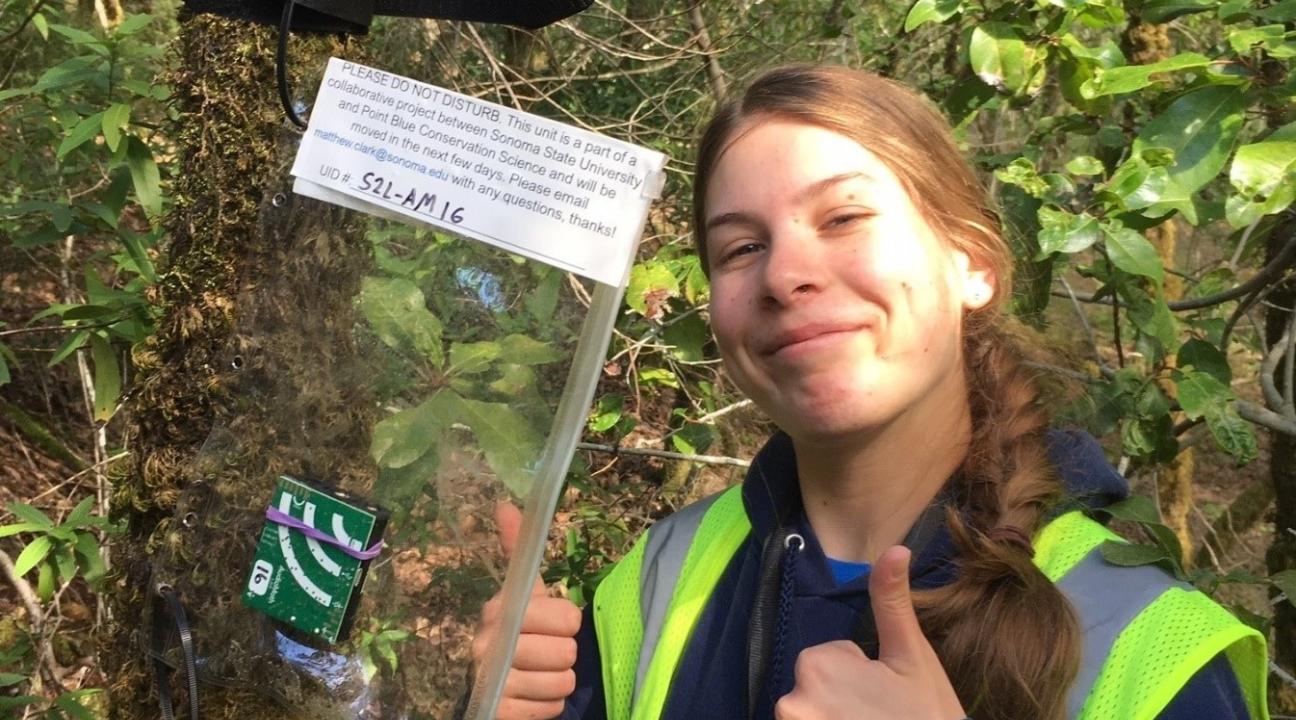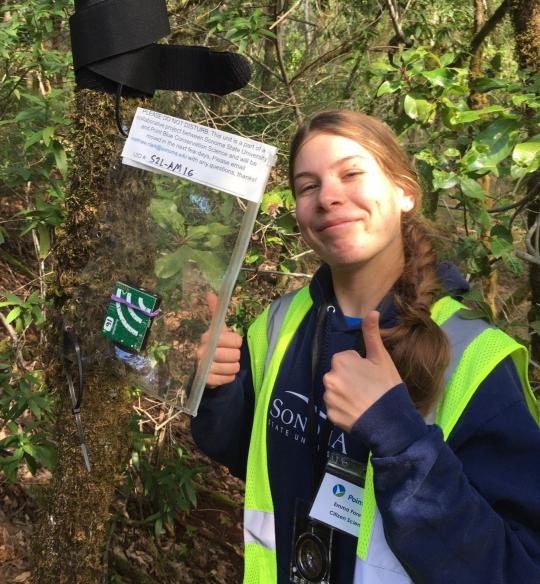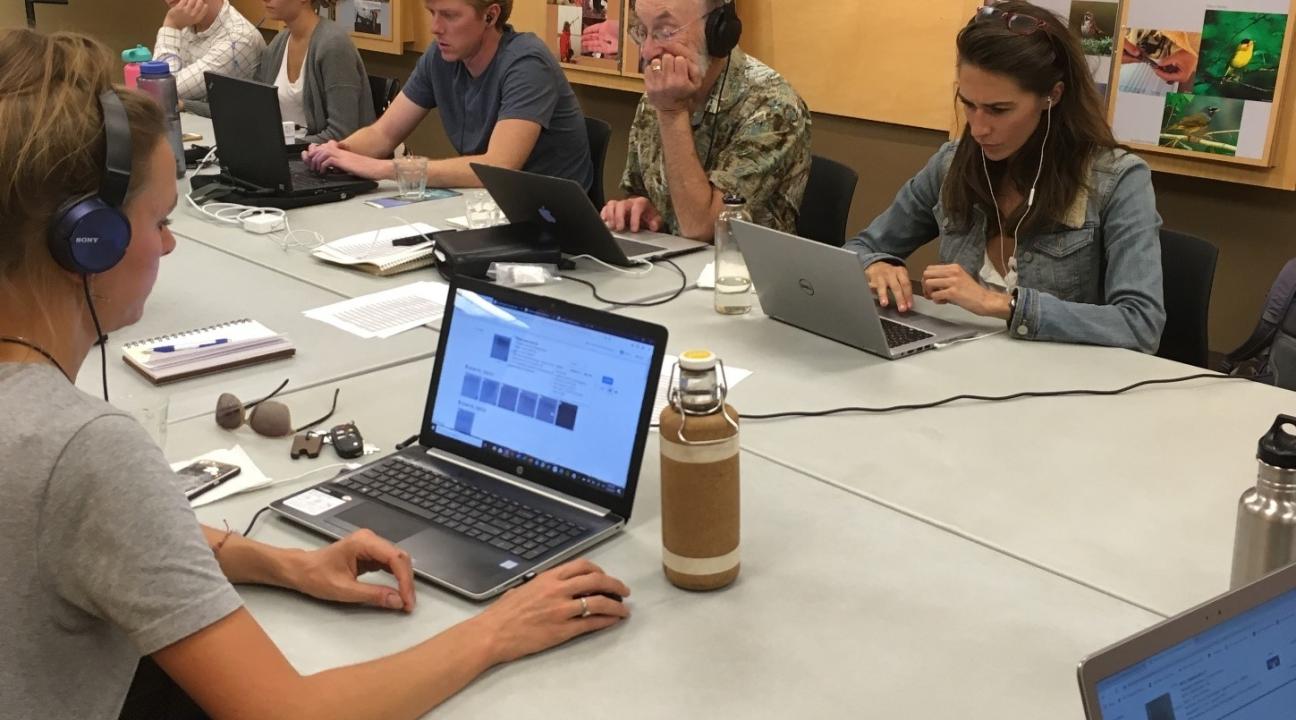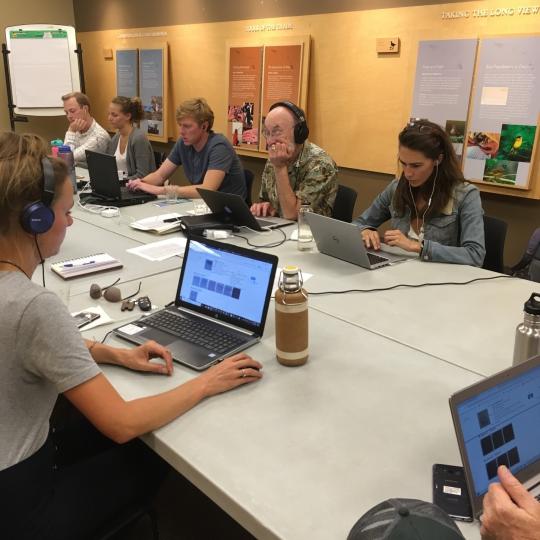Soundscapes to Landscapes: Monitoring Animal Biodiversity from Space Using Citizen Scientists
Department: GEP
College or Division: College of Humanities, Social Sciences, and the Arts
Sponsor: NASA
Calendar Start & End Date: -
Funding Amount: $1,145,141
Website: Soundscapes to Landscapes
Sonoma State University Professor Matthew Clark leads a NASA-funded project to monitor animal biodiversity, with the help of collaborative researchers, students, and volunteers also known as “citizen scientists”. The project, known as Soundscapes to Landscapes (S2L), relies on remote sensing, which is an important tool for long-term monitoring of biodiversity. S2L combines bioacoustic data collected by citizen scientists with satellite and environmental data to monitor bird diversity in Sonoma County, California.
S2L is using sound recordings collected by citizen scientists to map bird diversity across the region. The volunteers place low-cost, portable sound recorders, called AudioMoths, in a variety of habitats in the county. The teams return to retrieve the recorders after a period of 2-5 days and upload the “soundscape” recordings to a cloud-based bioacoustics platform, called ARBIMON. Through a series of “bird blitzes”, citizen scientists use a custom interface on ARBIMON to validate example bird calls in a subset of the recordings. These validation data are then used to train a “deep learning” computer algorithm to identify bird species present in all field site recordings.
The science team uses statistical modeling and satellite data to make maps of bird diversity based on the recordings collected by the citizen scientists. These maps are combined with habitat models based on two of NASA’s cutting-edge sensors: Global Ecosystem Dynamics Investigation (GEDI), a space-based lidar on the International Space Station, and a future satellite imaging spectrometer, currently simulated Hyperspectral Infrared Imager (HyspIRI) imagery from NASA’s airborne visible/infrared imaging spectrometer (AVIRIS). Data collected from these sensors is used to understand species distribution and factors related to conserving bird diversity.
In the spring of 2019, the field campaign focused on surveying publicly owned properties with new research permits for Sonoma Regional Parks, US Fish and Wildlife Service, and California State Parks. The project also obtained access to several larger private properties in the west area of Sonoma County and a large block of forest in the remote northwest area of the county. Other volunteers participated through a “mail deploy” approach, in which AudioMoth recorders and instructions were mailed to landowners to deploy the unit on their own property. Thirty-two citizen scientists participated in this activity. Collectively, volunteers spent 1,163 hours in the field.
Citizen scientists also helped identify, tag and validate bird calls in recordings in organized “bird blitzes” or at home. These bird calls will be used to sort through soundscape recordings and accurately identify target bird species at survey sites. The University of California, Merced (UMD) team also developed a prototype deep learning framework to identify bird species in noisy audio recordings. Since the field audio data were still being acquired and bird calls validated for training, team member Shrishail Baligar at UMD downloaded a large dataset of bird call audio files from the xeno-canto website in order to train and evaluate the prototype deep learning methods. The initial results were promising.
The in situ bird diversity data from field sites, as measured by bioacoustics, will be used with remote sensing, climate and other predictor variables in Species Distribution Models (SDM) that estimate the probability of occupancy for a given bird species. During year one, collaborative researchers greatly improved the SDM code from the prototype phase to perform multiple machine learning models on a High-Performance Cluster (HPC) at Northern Arizona University. In a SDM analysis with simulated GEDI and existing bird diversity data (from eBird, Breeding Bird Survey), the team found that canopy structure, as measured by GEDI, was the second most important group of predictor variables, after climate predictors. Canopy structure was particularly important in predicting the occurrence of conifer forest birds.
The Soundscapes to Landscapes project is a partnership among the Center for Interdisciplinary Geospatial Analysis (CIGA) at Sonoma State University, Point Blue Conservation Science, Audubon California, Pepperwood Preserve, Sonoma County Agricultural Preservation and Open Space District, Northern Arizona University, University of California Merced and University of Edinburgh.





